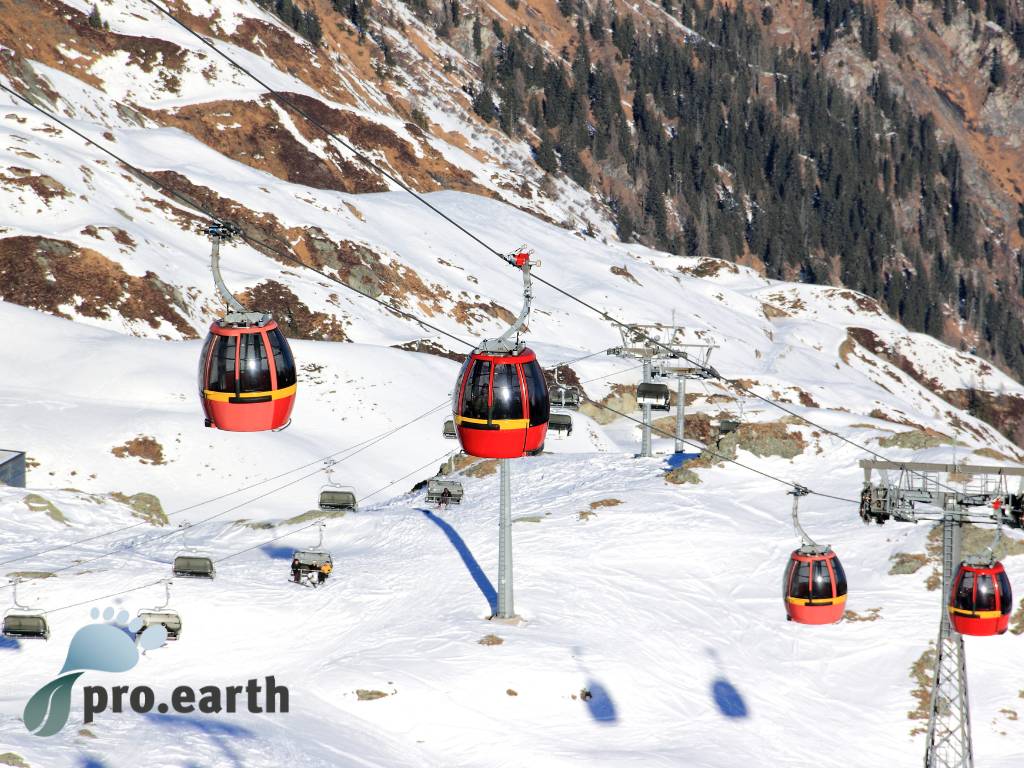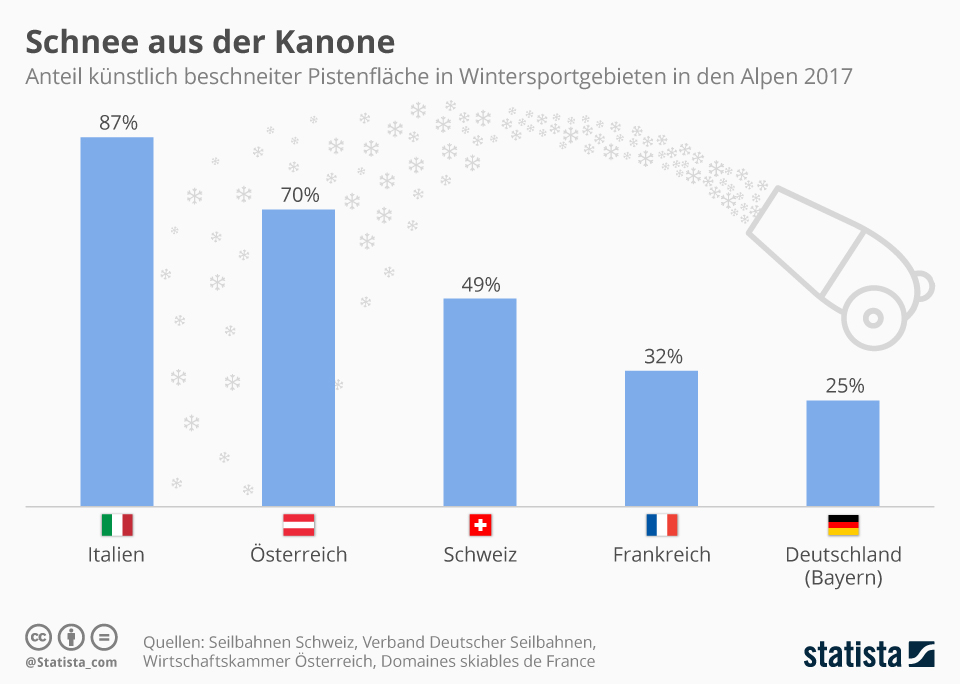The dying winter in the Alps

The massive glacier retreat. Drought in summer. Later snow that melts earlier. Thawing permafrost soil. New plant species. Increasing forest fires. The Alpine region is undergoing a rapid process of change. The Alps are a hotspot of global warming - this is where temperatures have risen the most on average, by almost two degrees Celsius.
Tourism in this densely populated mountain region with around 14 million people is more dependent on an intact natural environment than almost any other economic sector. Around 120 million tourists are attracted to the mountains every year. The business is maintained with enormous effort and drastic means, such as covering glacier areas, extending lifts to ever higher regions and over 100,000 snow cannons, many of which are ecologically extremely questionable.
The massive impact on ski resorts
But for how much longer? A small rise in temperature is all it takes for the snowflakes to stop falling from the sky. In the past, winters with little snow were considered exceptions. That has changed. If the average annual temperature rises by two degrees Celsius, the snow line shifts upwards by around 300 meters - clearly noticeable in the lower-lying Alpine ski resorts. Here you can see a forecast for the year 2100.
But not only there: "If someone had told me in the past that we would ever need snow cannons here, I would have declared them crazy," says Peter Leo, Head of Snow Management on the Kitzsteinhorn. "Today, we can no longer live without them." The spiral of upgrades in the winter ski resorts with more and more lifts in higher and higher regions and more and more snow-making systems has taken on alarming proportions. This is only a short-term solution to the fundamental problem of global warming and snow retreat.
Artificial snowmaking in the Alps
In Bavaria, around 25 percent of ski areas are covered with artificial snow, in Austria 70 percent and in Italy almost 90 percent, although this is only permitted for exposed locations according to the international Alpine Convention. In the 2015/2016 winter season, Austria alone spent over 154 million euros on snowmaking on the slopes, in addition to the other costs for maintaining and expanding the lifts.

The retreat of the Alpine glaciers
The changes are most dramatically visible on the 4,000 alpine glaciers such as the Kitzsteinhorn: two thirds of the glacier masses have disappeared since 1850. Many small glaciers no longer exist. Glaciologists fear that the "eternal ice" will melt away completely in the next 20 to 30 years. The dramatic effect of this is that the loss of the glaciers will also mean the loss of the water reservoir that previously continuously fed the Alpine rivers during the summer months.
In recent years, the pressure on the mountains has increased in numerous areas, be it the enormous amount of land taken up by second homes and hotel buildings, traffic avalanches due to mass tourism, road infrastructure, ski lifts, event tourism and action sports, all of which have led to the loss of important quiet areas. Because we humans have taken over this mountain region in this way, the Alps are even more susceptible to extreme weather such as floods, mudslides, avalanches and forest fires in times of climate change.
Sadly, we humans have a tendency to do more and more of the same, even if it goes in the wrong direction: in the case of the Alps, ever larger projects, deeper cuts into nature, more artificial snow, even though it is already foreseeable today that only sustainable, gentle tourism will have a future.






